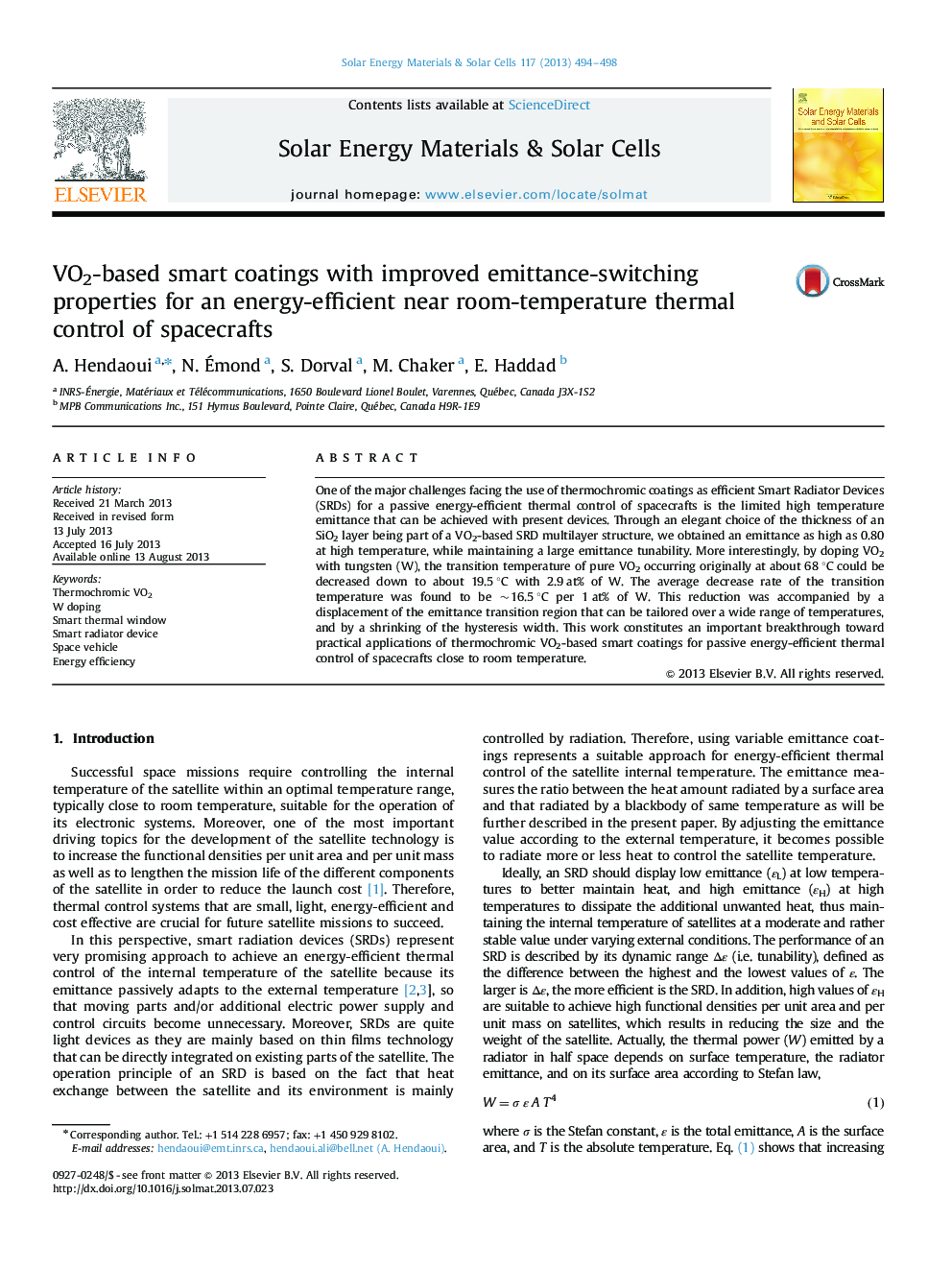| Article ID | Journal | Published Year | Pages | File Type |
|---|---|---|---|---|
| 6536399 | Solar Energy Materials and Solar Cells | 2013 | 5 Pages |
Abstract
One of the major challenges facing the use of thermochromic coatings as efficient Smart Radiator Devices (SRDs) for a passive energy-efficient thermal control of spacecrafts is the limited high temperature emittance that can be achieved with present devices. Through an elegant choice of the thickness of an SiO2 layer being part of a VO2-based SRD multilayer structure, we obtained an emittance as high as 0.80 at high temperature, while maintaining a large emittance tunability. More interestingly, by doping VO2 with tungsten (W), the transition temperature of pure VO2 occurring originally at about 68 °C could be decreased down to about 19.5 °C with 2.9 at% of W. The average decrease rate of the transition temperature was found to be ~16.5 °C per 1 at% of W. This reduction was accompanied by a displacement of the emittance transition region that can be tailored over a wide range of temperatures, and by a shrinking of the hysteresis width. This work constitutes an important breakthrough toward practical applications of thermochromic VO2-based smart coatings for passive energy-efficient thermal control of spacecrafts close to room temperature.
Related Topics
Physical Sciences and Engineering
Chemical Engineering
Catalysis
Authors
A. Hendaoui, N. Ãmond, S. Dorval, M. Chaker, E. Haddad,
